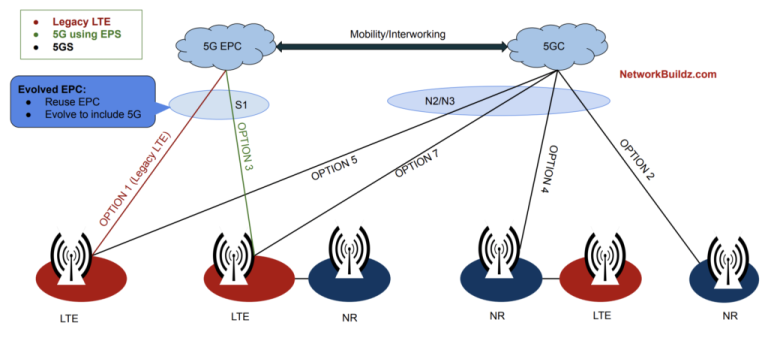Understanding the Weiss-Weinstein Bound (WWB): A Comprehensive Guide
telcomatraining.com – The Weiss-Weinstein Bound (WWB) is a critical concept in statistical signal processing, playing an essential role in performance analysis of parameter estimation problems. For researchers, engineers, and academics, understanding the WWB provides valuable insights into the theoretical limits of estimation accuracy under certain conditions. In this comprehensive guide, we will explore the fundamental principles of the WWB, its applications, and its significance in modern signal processing.
What is the Weiss-Weinstein Bound (WWB)?
The Weiss-Weinstein Bound is a lower bound on the Mean Squared Error (MSE) for any unbiased or biased estimator of a parameter. It provides a framework to evaluate how accurately a parameter can be estimated given the limitations of the observation model and noise. Unlike other bounds, such as the Cramér-Rao Bound (CRB), which are typically applicable to unbiased estimators, the WWB extends its applicability to biased estimators, making it a more versatile tool in practical scenarios.
The WWB is particularly beneficial in cases where the CRB fails to provide meaningful results, such as when dealing with non-linear estimation problems or low Signal-to-Noise Ratios (SNR). By offering a tighter bound under these conditions, the WWB has become indispensable in assessing the feasibility of estimation tasks.
Key Components of the WWB
To understand the WWB, it is essential to break down its key components:
- Likelihood Function: The WWB relies on the likelihood function of the observations, which represents the probability of observing the data given a specific value of the parameter.
- Prior Probability Distribution: The bound incorporates a prior probability distribution of the parameter, allowing it to handle cases with limited or biased information about the parameter’s true value.
- Test Statistic Function: The bound uses specific test functions to evaluate the separability between different hypotheses regarding the parameter.
These components work together to define the mathematical formulation of the WWB, which evaluates the estimation accuracy over all potential estimators, both unbiased and biased.
Applications of the Weiss-Weinstein Bound
The WWB finds applications across various fields, including:
1. Signal Processing
In signal processing, the WWB is employed to evaluate the performance of algorithms for tasks such as direction of arrival (DOA) estimation, time-delay estimation, and waveform design. Its ability to provide tight bounds under challenging conditions makes it an essential tool for advanced algorithm development.
2. Communications Systems
The WWB is extensively used in wireless communication systems to analyze the theoretical limits of channel estimation, synchronization, and equalization algorithms. By understanding these limits, engineers can optimize system designs to approach maximum achievable performance.
3. Radar and Sonar Systems
For radar and sonar systems, the WWB helps determine the theoretical limits of target detection, localization, and tracking. It plays a pivotal role in designing systems capable of operating effectively under adverse environmental conditions.
4. Machine Learning and Data Science
The WWB is increasingly being applied in machine learning for analyzing the performance of estimators and classifiers. It provides a framework to assess model uncertainty and develop robust prediction algorithms.
Advantages of the Weiss-Weinstein Bound
The Weiss-Weinstein Bound offers several advantages over other bounds, including:
- Generality: Unlike the CRB, which assumes unbiased estimators, the WWB applies to biased estimators as well. This generality allows it to be used in a wider range of scenarios.
- Tighter Bounds: In scenarios involving low SNR or non-linear models, the WWB often provides a tighter bound than the CRB, leading to more realistic performance evaluations.
- Incorporation of Prior Knowledge: By including prior information, the WWB enables the integration of domain-specific knowledge into the analysis, improving the bound’s accuracy.
Challenges and Limitations
Despite its advantages, the WWB has certain challenges and limitations:
- Computational Complexity: Calculating the WWB can be computationally intensive, especially for high-dimensional problems or complex likelihood functions.
- Dependence on Test Functions: The bound’s tightness depends on the choice of test functions, requiring careful selection to achieve meaningful results.
- Prior Dependence: While the inclusion of prior distributions is an advantage, it also introduces sensitivity to incorrect or imprecise prior information.
Conclusion
The Weiss-Weinstein Bound is a powerful tool for understanding the theoretical limits of parameter estimation. Its versatility and generality make it applicable to a wide range of fields, from signal processing to machine learning. While computational complexity and prior dependence pose challenges, the WWB’s ability to provide tighter and more accurate bounds than traditional methods ensures its continued relevance in research and practical applications.
By mastering the principles of the Weiss-Weinstein Bound, practitioners can gain a deeper understanding of estimation theory and leverage its insights to design better systems and algorithms. Whether you’re working on signal processing, communications, or advanced data analysis, the WWB is an invaluable resource for pushing the boundaries of performance analysis.







